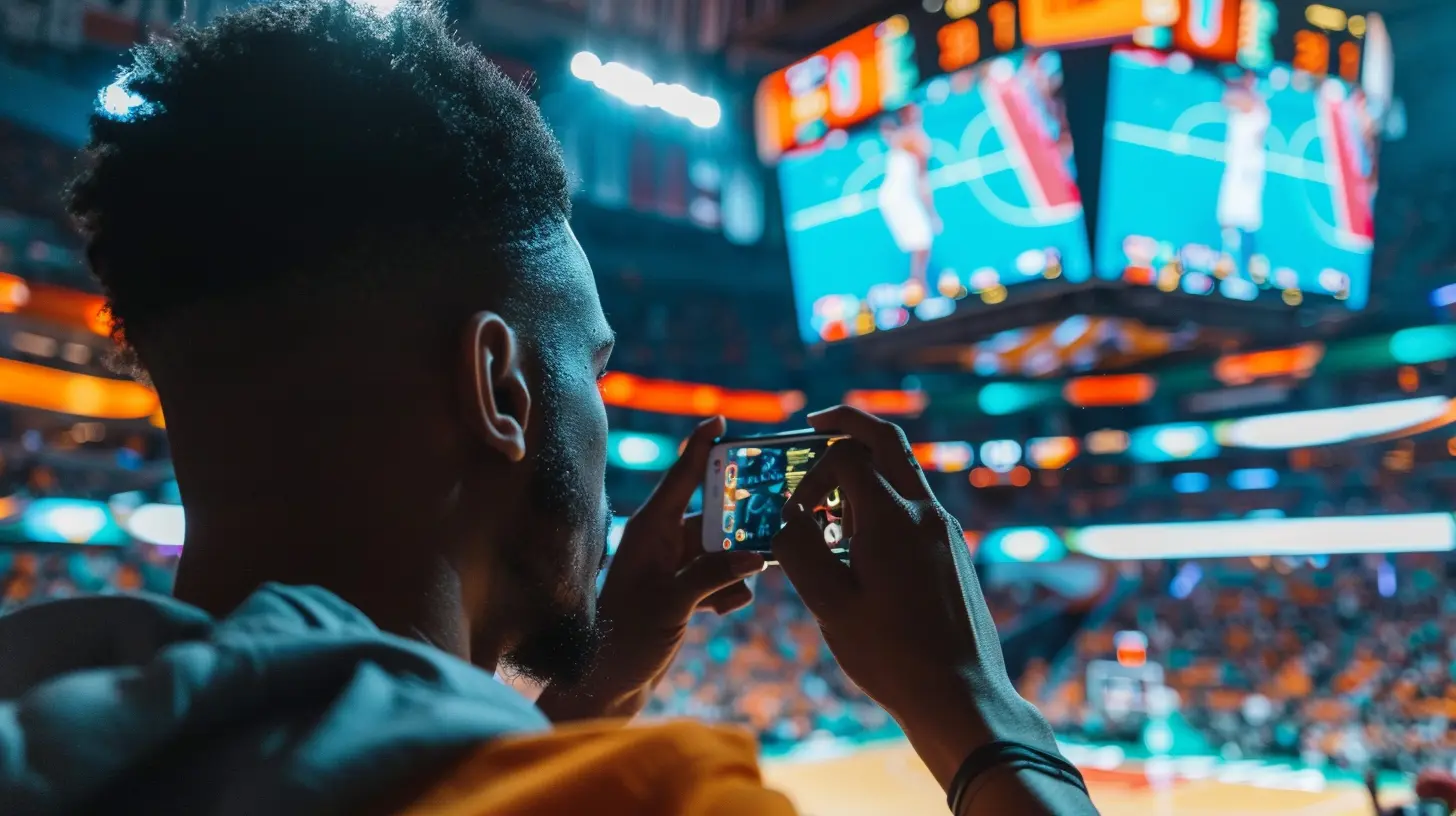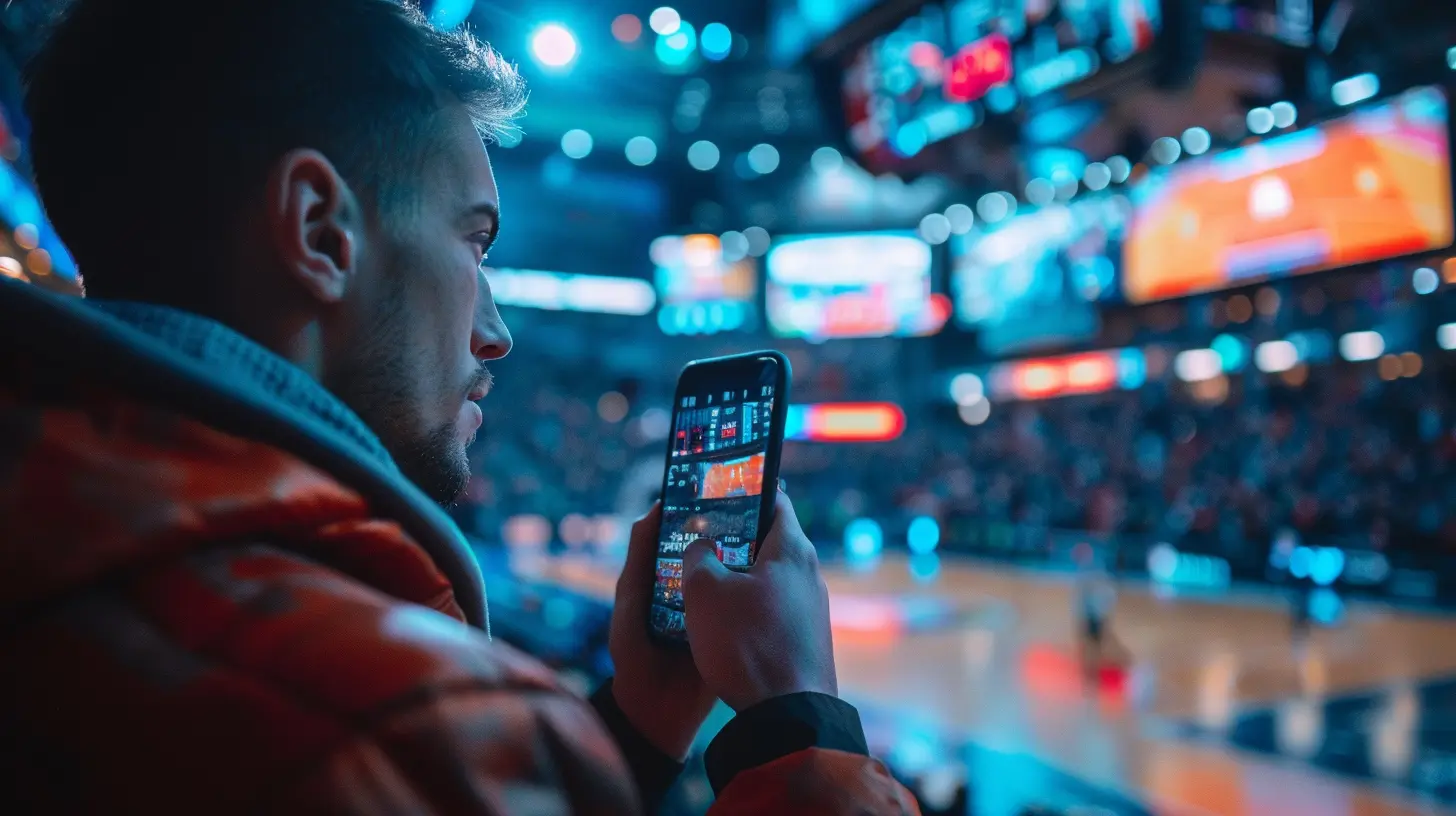29 March 2025
In today's fast-paced world, mobile devices have become an extension of our hands—quite literally! People are glued to their smartphones, especially when it comes to consuming sports content. Whether it's checking scores, watching highlights, or scrolling through social media for the latest updates, mobile is the go-to platform. So, if you're in the sports marketing game and you're not prioritizing mobile audiences, you're missing out big time.
Mobile optimization isn't just a trend; it's a necessity. So, how do you make sure your sports marketing strategy is mobile-friendly? Let’s break it down.

Why Mobile Matters in Sports Marketing
Before we dive into the gritty details, let’s talk about why mobile matters so much, particularly in sports marketing. The rise of mobile usage is undeniable. In fact, studies show that more than half of internet traffic comes from mobile devices. And when it comes to sports? Fans are engaging with content on their phones more than ever before.Think about it—who's watching the game on TV without tweeting about it, or scrolling through Instagram to see the best game-day pics? Sports fans are a mobile-first audience. If you're not optimizing for mobile, you're essentially leaving a chunk of your audience out in the cold.
So let’s look at some key strategies to make sure your sports marketing hits the mark with mobile audiences.

Optimize Your Website for Mobile
First things first: Your website needs to be optimized for mobile. This is non-negotiable. If your website isn’t mobile-friendly, visitors will bounce faster than a basketball during a fast break.Responsive Design Is Key
The most important factor here is responsive design. This means your website should automatically adjust to fit any screen size—whether it’s a smartphone, tablet, or desktop. If your website looks clunky or distorted on a mobile device, users will bail.Responsive design ensures that your content is easy to read, images scale properly, and navigation remains user-friendly. No one wants to zoom in and out to read tiny text or swipe endlessly to find a link. Make it seamless, and your audience will stick around longer.
Fast Loading Times
Speed matters. In sports, every second counts, and the same goes for your website. If your site takes more than a few seconds to load, users will leave faster than a sprinter out of the blocks.Use tools to check your website’s speed and make optimizations like compressing images, enabling browser caching, and reducing the number of redirects. Google takes page speed into account when ranking sites, so improving your load times will not only keep users happy but also boost your search engine rankings.

Focus on Mobile-Friendly Content
Now that you’ve got a responsive website, what about the content itself? It’s not just about making your website look good; it’s also about making sure your content is digestible on smaller screens.Short, Punchy Headlines
When it comes to mobile, less is more. Long-winded headlines won’t cut it. Keep your headlines short, snappy, and to the point. Sports fans are usually in a hurry—they want to get the latest update or score quickly. A headline that's too long will lose them halfway through.Use Bullet Points and Short Paragraphs
Reading on a mobile device is different from reading on a desktop. On a small screen, long blocks of text can feel overwhelming. Break up your content into short paragraphs and use bullet points where possible. This makes your content more scannable, and users will find it easier to digest.Visual Content Is King
Let’s face it—people love visuals, especially sports fans. Whether it’s a game highlight video, a behind-the-scenes photo, or an infographic, visual content is a huge hit on mobile. Make sure to use high-quality images and videos that load quickly and look great on small screens.But don’t overdo it! Too many images or videos can slow down your site, which brings us back to the importance of fast loading times.

Leverage Social Media for Mobile Audiences
Social media and sports go hand-in-hand, and guess what? The majority of social media users are on mobile. That means your social media strategy needs to be optimized for mobile audiences as well.Create Mobile-Optimized Ads
If you're running ads on platforms like Instagram, Twitter, or Facebook, make sure they are mobile-optimized. This means using vertical videos, mobile-friendly call-to-action buttons, and concise copy. Social media users are scrolling quickly—your ads need to grab their attention in a split second.Engage in Real-Time
One of the best things about sports is that it happens in real-time, and social media allows you to connect with your audience in the moment. Whether it's live-tweeting during a game, posting real-time highlights, or engaging with fans in the comments, social media is your chance to create in-the-moment interactions that mobile users crave.Use Stories and Short-Form Content
Instagram Stories, Snapchat, and TikTok are all about short-form, engaging content. Sports fans love this type of content because it’s quick, digestible, and fun. Use these platforms to share behind-the-scenes moments, player interviews, or quick game recaps.Stories are especially great for mobile because they’re designed for vertical viewing, making them perfect for smartphone users. Plus, they disappear after 24 hours, which creates a sense of urgency and FOMO (fear of missing out).
Optimize Email Marketing for Mobile
Email marketing isn’t dead, but your emails need to be mobile-friendly if you want them to be effective. According to studies, around 61% of emails are opened on mobile devices. That’s a huge number, and if your emails aren’t optimized for mobile, you’re losing potential engagement.Use Mobile-Friendly Design
Make sure your emails are responsive, just like your website. This means using a single-column layout, large fonts, and tappable buttons. No one wants to pinch and zoom to read an email. Keep it simple and user-friendly.Keep Your Subject Lines Short
When people check their emails on their phones, they see fewer characters of a subject line compared to a desktop. Keep your subject lines short and to the point to make sure they don’t get cut off.Include Clear Calls to Action
Whatever your goal is—whether it’s getting people to visit your website, watch a game, or buy tickets—make sure your call to action (CTA) is clear and easy to tap. Use large, colorful buttons that stand out and are easy to click on a small screen.Utilize Mobile Apps
If you really want to connect with your audience on mobile, consider developing a mobile app. Many sports teams and organizations have their own apps, and for a good reason. An app allows you to offer exclusive content, send push notifications, and create a more personalized experience for your users.Push Notifications
Push notifications are a powerful tool for engaging your audience in real time. You can send updates about game scores, ticket sales, or special promotions directly to your users’ phones. But be careful not to overdo it—too many notifications can annoy users and lead to uninstalls.In-App Exclusive Content
Offering exclusive content through your app is a great way to keep your audience engaged. This could be anything from behind-the-scenes footage, player interviews, or exclusive discounts on merchandise. Exclusive content makes users feel like they're getting something special, which builds loyalty.Mobile SEO Best Practices for Sports Marketing
We can’t talk about mobile optimization without touching on SEO. Mobile SEO is crucial for ensuring that your content ranks well on search engines, especially with Google's mobile-first indexing.Focus on Local SEO
If you're a sports team or organization that depends on local fans, local SEO is a must. Make sure your website is optimized for local searches by including relevant keywords, using Google My Business, and encouraging reviews from local fans.Optimize for Voice Search
With the rise of virtual assistants like Siri, Alexa, and Google Assistant, more and more people are using voice search. Optimizing for voice search means using more conversational language in your content and focusing on long-tail keywords. For example, instead of just targeting "sports tickets," try targeting "where can I buy sports tickets near me."Mobile-Friendly Meta Tags
Make sure your meta titles and descriptions are optimized for mobile. Keep them short and to the point, as search engines display fewer characters on mobile devices compared to desktops. This will help improve your click-through rates and overall visibility on search engines.Conclusion
Optimizing your sports marketing for mobile audiences isn’t just a good idea—it’s essential. With more and more fans consuming sports content on their mobile devices, you need to ensure that your website, content, social media, and email marketing are all mobile-friendly. Focus on responsive design, fast loading times, mobile-optimized content, and a seamless user experience to keep fans engaged and coming back for more.Remember, in the world of sports, timing is everything. If your mobile experience isn’t up to par, you’ll lose fans to competitors who are ready to meet them where they are—on their smartphones.




Jinx McLoughlin
Unlock the hidden potential of mobile marketing—where every tap is a heartbeat. Discover the secrets that could transform your sports brand's connection with fans in the digital arena.
April 3, 2025 at 4:50 AM